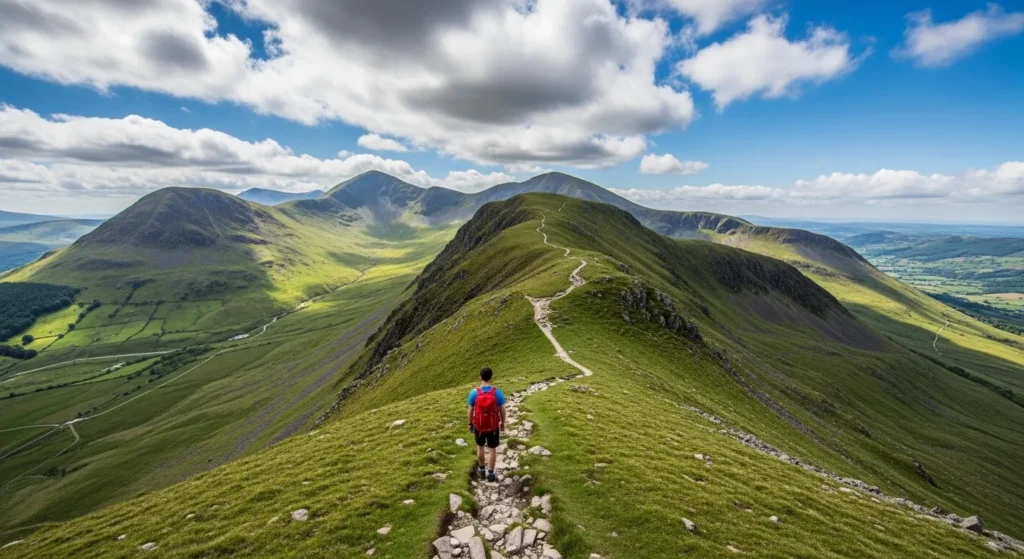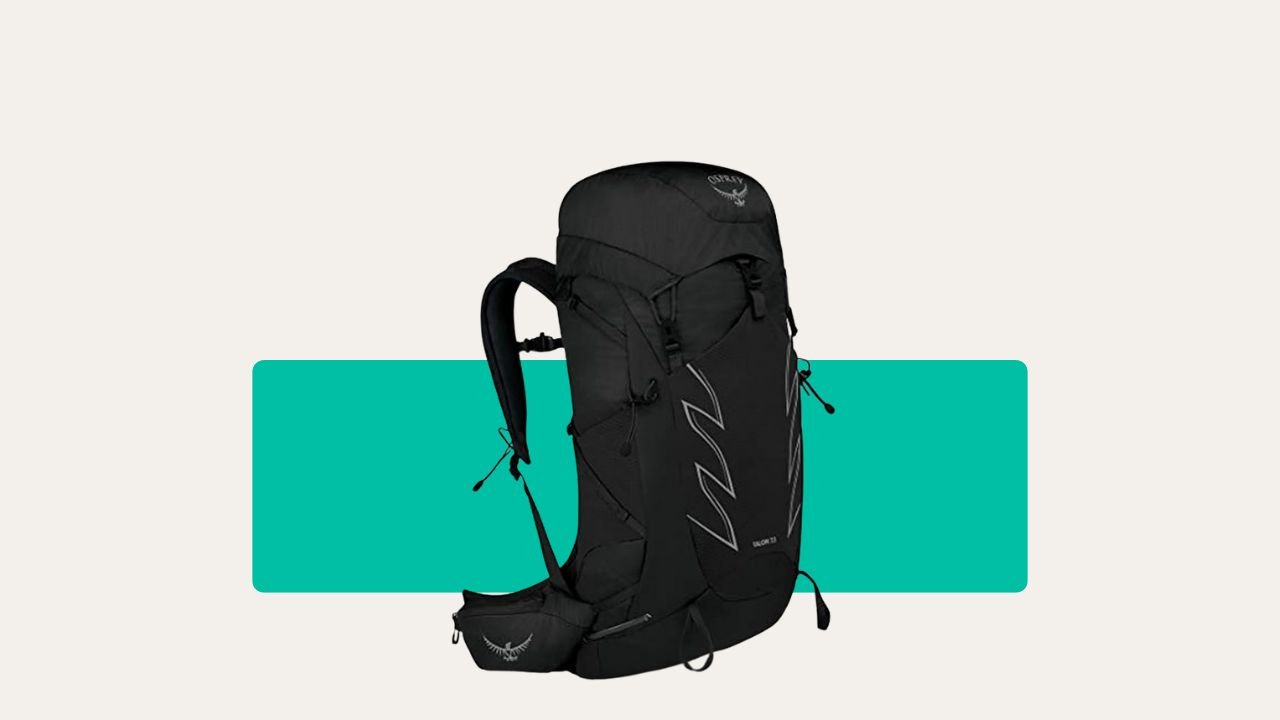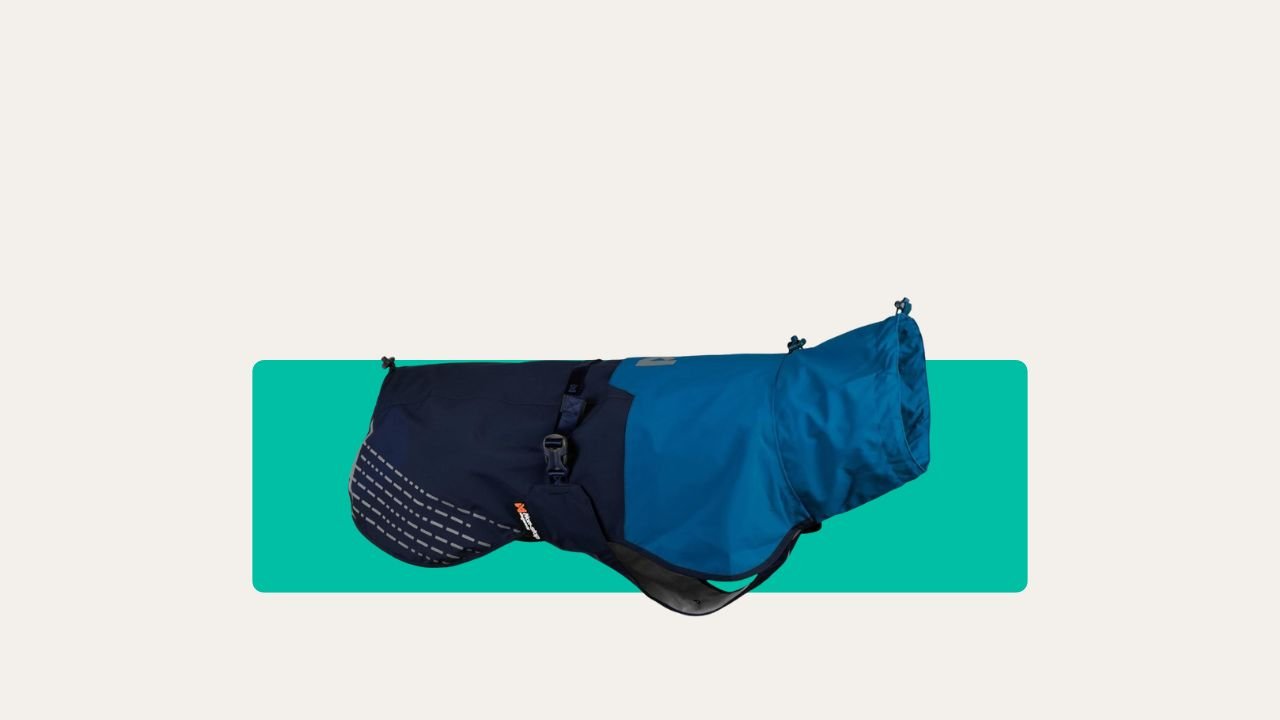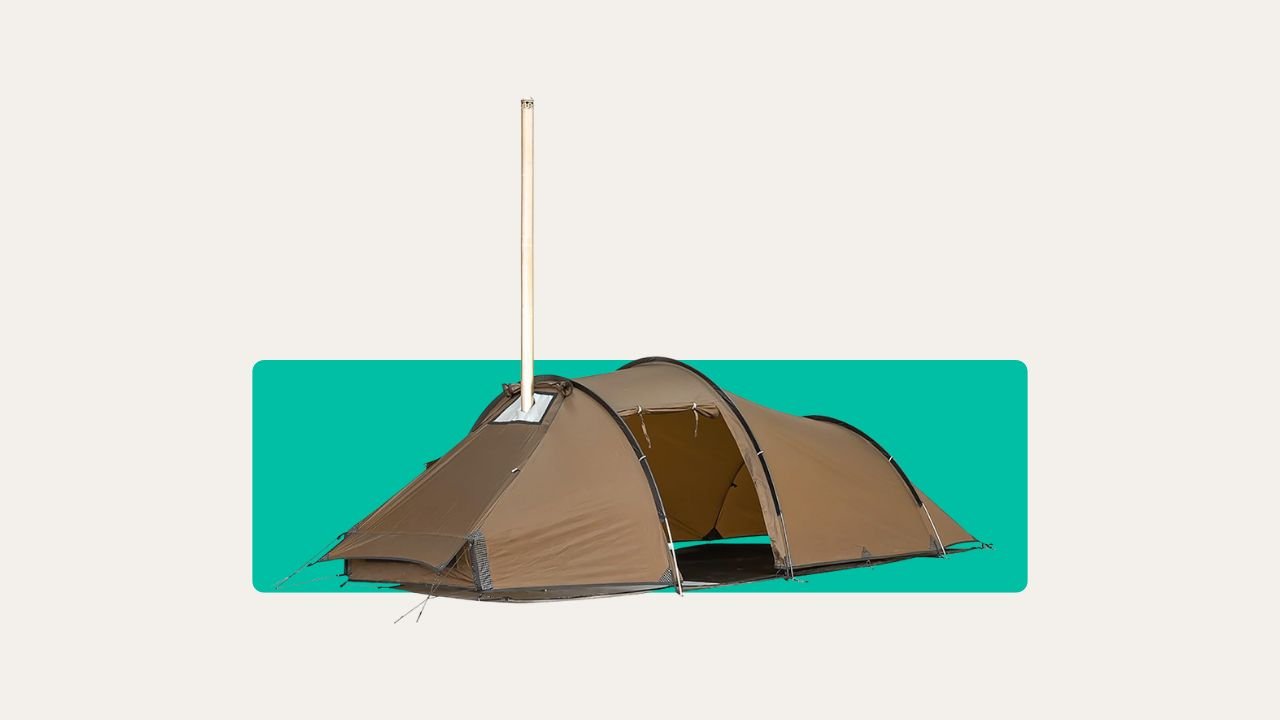Don’t get caught out thinking Cnicht is a soft walk just because it’s no Snowdon. This is a proper mountain, and it earns its nickname—the Welsh Matterhorn.
If you’re after sweeping views, a sense of wildness, and the best ridge-walk in Snowdonia, you’re in for a treat. Leave the crowds behind and get ready for a real mountain day.
Where Is Cnicht? Setting the Scene in Snowdonia
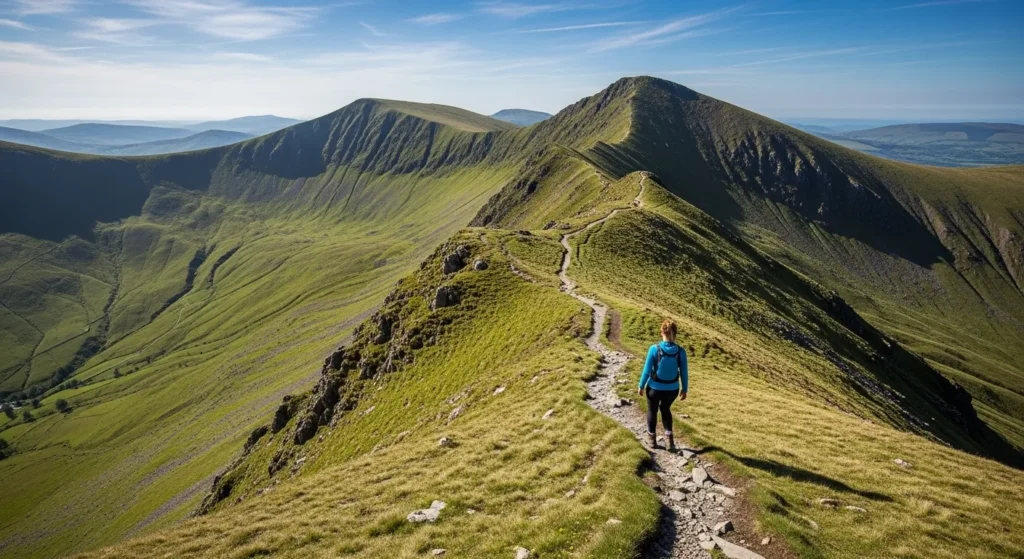
Cnicht sits in the Moelwynion range, tucked away in the quieter, rugged side of Snowdonia (Eryri). You don’t get endless queues like you do on Snowdon’s main route.
Instead, Cnicht rises sharply above the slate and sheep, just north of the little village of Croesor. If you’re driving from the south, brace yourself for some classic Welsh roads—single-track, twisty, the type that’ll humble even the flashiest 4×4. Give yourself plenty of time getting in.
Picking Your Starting Point: Croesor or Gelli Iago?
Your decision is simple: Croesor or Gelli Iago.
Croesor is by far the more popular choice. There’s free parking for about 20–30 cars, a tidy spot at the edge of the village, and even a public loo. But don’t expect shops or a pub—just a little cluster of houses beneath the mountain. The road in is narrow and feels like a challenge after the motorway.
If you’d rather skip the crowds, Gelli Iago is your ticket. It’s quieter and gets you closer to the remote feel that makes walking in the Moelwynion so special. Just double-check you’ve got the right OS map. When the cloud drops, Gelli Iago feels a long way from anywhere. Both starts are good, but Croesor wins for first-timers, especially if you’ve never had to back your car a quarter mile for a tractor before.
The Route: What to Expect (And Where It Gets Steep)
Forget the myth that you need ropes for Cnicht. For most of the walk, the path is obvious—a mix of slate, grassy track, and wide open hillside. Set out from Croesor car park, and you’ll swing through a brief patch of woodland before the slope starts to bite. The early section can be boggy after rain (and when isn’t there rain in Wales?), so decent boots are a must.
You’ll zig-zag up through heather and rock, following the ridge in a broad U-shape, with wild views stretching back down the valley. It’s the kind of route where you always feel like you’re heading for the clouds.
Soon enough, you’ll hit the main ridge, and the climbing sharpens. The path rockets skywards, the last 200 metres or so. Now’s when you’ll want your hands free—there’s a short stretch of easy scrambling close to the summit. It isn’t exposed, but it’ll remind you that you’re on real mountain ground. I once watched a chap in trainers skid halfway down here; don’t be that person. Stick with boots that grip, and you’ll love the last scramble.
Honestly, the “false summit” trick will get you. Several bumps in the ridge look like the top—just keep heading up until the world drops away all around you. That’s the real summit.
How Long Does the Walk Take? Stats That Actually Matter
For the Croesor to Cnicht loop, you’re looking at around 7 to 8 kilometres, with 715 metres of climbing. Most folk manage the round trip in roughly 4.5 hours, with time for snacks and gawping at the view. Fit walkers, or those in a hurry, could be quicker—but why rush it?
Want a bigger challenge? Add Moelwyn Mawr and Moelwyn Bach into your day. That turns it into a 15-kilometre circuit with a whopping 1,100-metre gain. Plan for 6–8 hours, especially if the weather has other ideas. I once crawled down Moelwyn Bach in a hailstorm—it added an hour and soaked everything I’d brought (including the sandwich I’d foolishly stuffed in an “almost waterproof” pocket).
What Makes Cnicht Special? Not Just the Views
Cnicht is less about the technical grind and more about raw beauty. The summit gives you a 360-degree sweep—glimpses of Snowdon (Yr Wyddfa), the Dwyryd estuary, and even out to the Irish Sea on a clear day.
What’s better: there’s breathing space up top. Unlike Snowdon’s summit, you’ll often have Cnicht to yourself, save for a few red kites and the occasional sheep. I’ve sat there at sunrise with a flask of tea, watching mist curl through the valleys. That’s the magic: those moments where you feel like you’ve got all of Wales below your boots.
Sunset is just as special. Just mind your return—it’s not hard to end up bumbling across boggy ground, torch held between your teeth, cursing your optimism, if you linger too late.
Your Kit List: What You Really Need for Cnicht
Forget the myth that it’s fine to walk Cnicht in trainers and jeans “if the weather looks good.” I’ve seen rain lash down in July for four hours straight, and once had to share my dry gloves with a stranger whose fingers were blue.
Here’s what you actually need:
- Sturdy waterproof boots with decent tread. The path is wet—and slippery—more often than not.
- Waterproof jacket and trousers. I’ve trusted my Mountain Equipment shell countless times here.
- Layers. Fleece, synthetic shirt, or anything quick-drying. Cotton T-shirts are useless.
- Gloves and a warm hat. Yes, even in May. Winds bite hard on the ridge.
- Map and compass. Satnav and mobiles are hopeless once the clag blows in or your signal fades. OS Explorer OL18 has you sorted.
- A headtorch (plus spare batteries) if there’s any chance you’ll be late. I’ve fumbled through far too many dim finishes.
- Snacks and a flask. Don’t skimp—high energy food, easy to eat on the go.
- Whistle and small first aid kit. Don’t laugh until you’ve patched a knee.
- Dry bag for your bits you truly want to keep dry.
Why so strict? Because conditions can—and do—change in minutes. Cloud drops fast. Wet ground turns sketchy. You want gear that works when you need it, not novelty kit you regret buying.
Weather and Visibility: The Real Danger
I once set out on Cnicht in sunshine and was socked in with fog before midday. Without a map and compass, it’s easy to follow the wrong sheep track and end up on the wrong ridge or in a bog. Even experienced walkers have been caught out here.
Always check the forecast before you head out. The Met Office’s Snowdonia mountain forecast is a good shout. If in doubt, lower your plans—Cnicht will wait. No view is worth a rescue.
Guided Walks: Who Needs Them?
If you’re not confident with nav skills or it’s your first real ridge walk, a guide makes sense. There are plenty of local guides offering group days for around £45 a head.
They take care of safety, pace, weather worries, and can even spin a story or two about the old slate mines. If you want to level up your confidence, it’s money well spent and a lot less stressful.
Guided walks are also a smart pick if you’ve dragged along a group with mixed abilities. You get peace of mind knowing someone else is watching for the fast walkers and the dawdlers. Kids often love these days too—guides usually pack a few wildlife or map games.
Safety Hacks and Common Mistakes
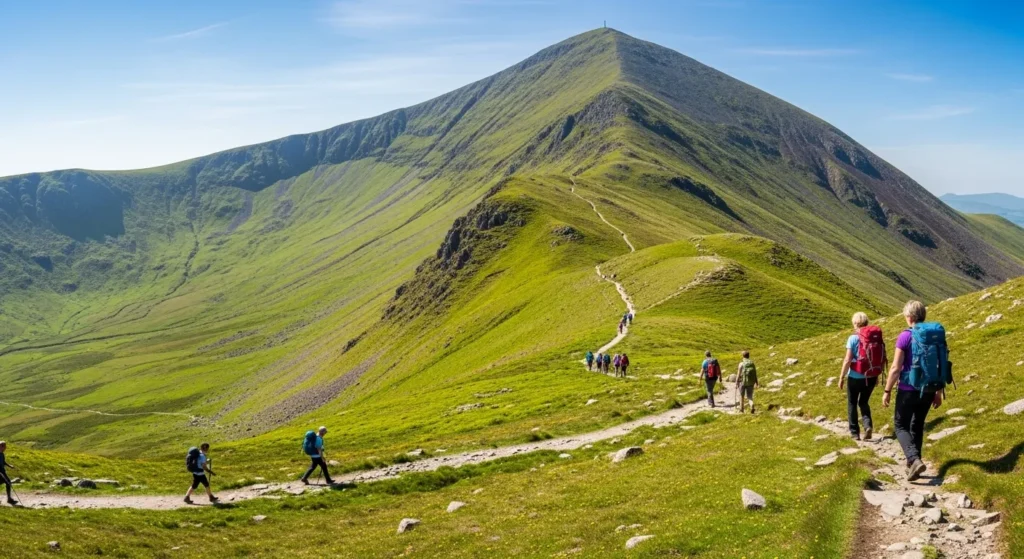
Biggest mistake? Underestimating the mountain. Cnicht is welcoming—but it’s no city park. I once bumped into a family who thought “well-marked path” meant “pavement all the way.” Two hours later, their trainers squelched, and their waterproofs were bin bags.
Know your limits. If it’s foul, you can always turn back. Keep an eye on daylight—especially outside summer. If you’re solo, tell someone your route and rough times. Stick to the main path if the cloud’s down. In real trouble, stay put and use your whistle—rescue is easier if you’re not wandering.
Final Thoughts: Is Cnicht for You?
If you want a walk that feels wild but isn’t death-defying, Cnicht is a beauty. Perfect for those wanting to step up from valley strolls or looking for a lesser-known challenge. Bring the right kit, respect the weather, and don’t be afraid to take it steady.
Bring a mate, or your kids (if they’re strong walkers—my own daughter still rates her Cnicht day as “better than Alton Towers”). Pack extra socks. Sink into the views. And if you’re lucky, find a tucked-away spot for your summit snack while the clouds clear.
For those seeking a proper Welsh mountain adventure—balanced between tough and totally doable—Cnicht hits the sweet spot every time.
Ready for your own Cnicht walk? Check out your map, grab your best boots, and make some memories in the Welsh hills.
If you want more practical guides, tips, or campsite advice for wild Wales, see our other posts on Snowdonia camping tips and the best hiking boots for the UK – because nothing ruins a day like soggy socks and cold tea!

